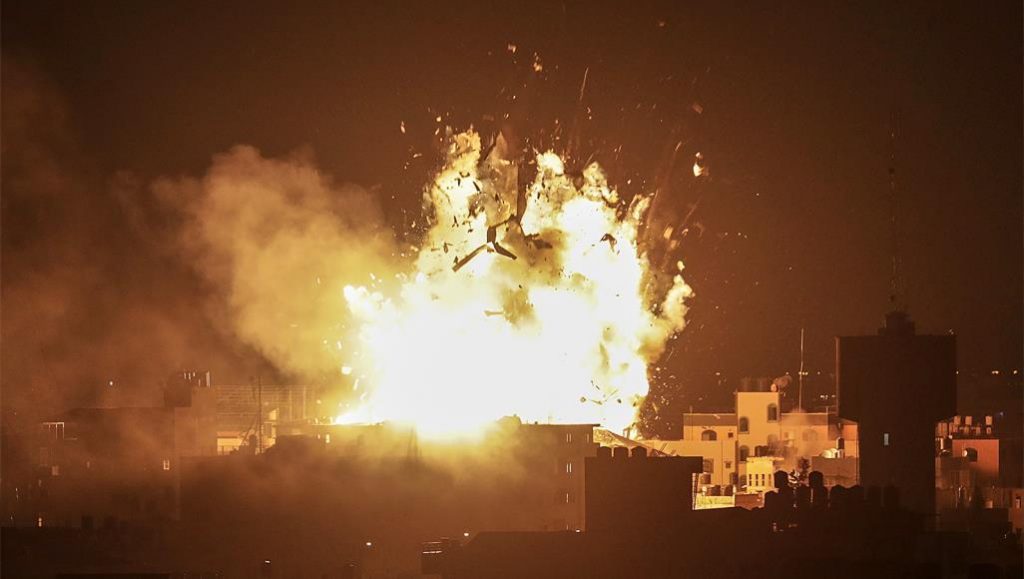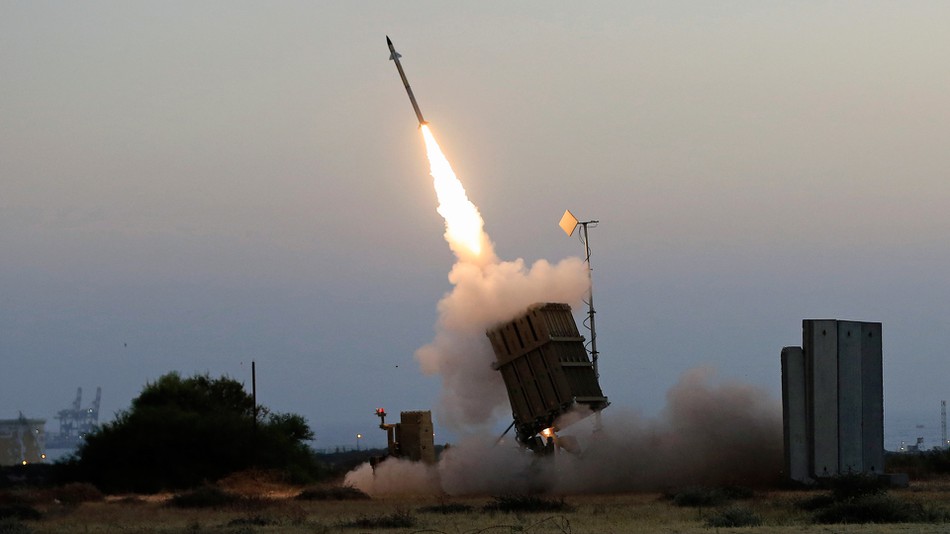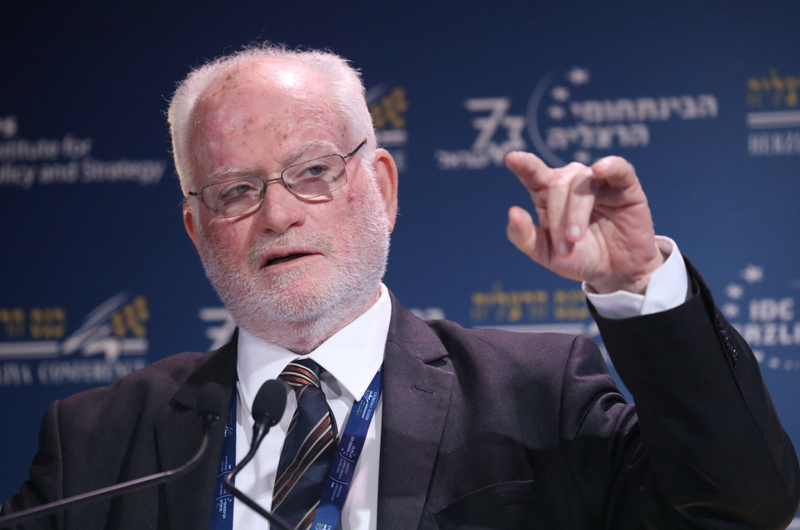Australia/Israel Review
Israel’s two narratives on Gaza
Nov 27, 2018 | Yaakov Lappin

After 24 hours of intense exchanges of fire, Israel and Hamas reached a ceasefire on Tuesday Nov. 15, and two very different narratives emerged in Israel to describe what had happened.
But first, the bare facts: An IDF special-forces operation in Gaza was exposed by Hamas on the night of Sunday Nov. 12, and in the resulting gunfight, one Israeli officer and seven Hamas members were killed.
A day later, the Gazan terror factions decided to avenge their losses by launching a coordinated mass rocket assault on southern Israel, firing some 450 projectiles at Israeli civilian communities and an anti-tank missile at a military bus.
These attacks resulted in a Palestinian worker in Israel being killed by a direct rocket strike in Ashkelon, and some 50 injured Israelis, including one seriously injured woman, in addition to a seriously injured soldier. Several homes and buildings sustained major damage.

Israel’s Iron Dome defence system in operation
The Iron Dome missile-defence system shot down 100 Gazan projectiles heading into built-up areas, preventing much greater carnage on the ground.
For its part, the Israel Defence Forces struck 160 Hamas and Palestinian Islamic Jihad targets across Gaza, mostly through airstrikes. Four of the targets were described by the military as strategic, high-value enemy assets, including Hamas’s military intelligence multi-storey building and an Al-Aqsa television station, both of which were utterly demolished.
Approximately 20 Gazan combatants were killed in this round of escalation, according to Israeli officials. Other Hamas and Palestinian Islamic Jihad targets the IDF struck included weapons factories, offensive tunnels and command posts.
Hamas making do with claims of victory
In the hours after the ceasefire was reached, Israeli youths from the rocket-battered town of Sderot burned tyres and clashed with police, venting their anger over what they perceived as the government’s capitulation to Hamas’ extortionist tactics and the lack of a decisive Israeli victory.
A wide swathe of the Israeli public views the ceasefire as a Hamas achievement. Many citizens feel let down and deeply frustrated after seeing the south come under intense terrorist fire, and Israel taking relatively limited, calculated steps, in the form of airstrikes, in response.
Some defence analysts also believe that the time has come to force a change for the better in southern Israel, after months in which Hamas initiated violence to secure funds for Gaza and increase its deterrent posture against Israel.
The first narrative views Tuesday’s ceasefire as a humiliating and disturbing endorsement of Hamas’s policy of gambling on violence. Hamas felt it could unleash major firepower on Israeli civilians and walk away safely to tell the tale. And in their eyes, it has.
But a second and very different narrative also exists in Israel, and it’s one that was adopted by a majority of the diplomatic-security cabinet. This narrative holds that Hamas absorbed painful strikes and is masking this with propaganda claims of victory.
The cabinet held an all-day closed-door briefing on Nov. 14, and heard a succession of assessments and recommendations by defence chiefs.
At the end of it all, it released the shortest of statements, saying, “The cabinet instructed the IDF to continue with operations as necessary.” Shortly afterwards, the truce was announced.
Larger considerations loom from Hezbollah
So what did the cabinet, led by Israeli Prime Minister Benjamin Netanyahu, who immediately flew back to the Jewish state from attending World War I commemoration ceremonies in France, hear throughout the day? While the content of the discussions remains classified, a prominent cabinet minister, Energy Minister Yuval Steinitz, appeared in a Channel 2 studio and hinted that far wider considerations had guided Israel’s decision.
One of them appears to be the Israeli defence establishment’s desire to prioritise military readiness and resources for the larger threats developing in the northern arena.
“We are weighing everything. We also see the wider picture. We have enormous challenges, which I cannot detail, in the northern arena,” he said. As he spoke, scenes of angry protesters in southern Israel burning tires were broadcast.
In Lebanon, the Iranian-backed Hezbollah, which has between 120,000 to 150,000 projectiles pointed at Israel, is seeking to produce guided missiles in underground facilities in Beirut. It can strike almost any point in Israel. In Syria, Iran is taking advantage of President Bashar Assad’s brutal victory, and its partnership with Russia, to create attack bases against Israel. The IDF is monitoring these developments with great concern and preparing for a number of possible contingencies.
A war in Gaza now would, therefore, be seen by defence planners as a distraction that should be avoided, if possible – an assessment that Hamas appears to have picked up on when making its own gamble to launch a controlled escalation.
Maj.-Gen. (Res.) Amos Gilead, who until recently served as director of policy and political-military affairs at Israel’s Defence Ministry, referred to these complex considerations during a speech he gave to the Herzliya Conference in May, which is worth revisiting, to gain a glimpse into the logic that seems to have guided the cabinet.
“Think first, act second,” Gilead told the conference at the time. “The Iranians have built ‘Hezbollahstan,’ an entity in Lebanon that is stronger than Lebanon itself, which has 120,000 rockets, that’s 2,500 rockets they can fire per day… They want to add [guided] missiles to this,” he said.
“They want to add Syria to this. The rumours of Assad’s death were premature, and he is determined to stay. Has two sponsors, the Russians and Iran, and Iran is demanding its debt from Assad. The payment is setting up a base on the Syrian Golan and to open a second front based on Iranian forces. And to add thousands of militia members from all over the world to this,” stated Gilead. “If Israel doesn’t stop this, it will be encircled. This process is happening.”

Major-General (Res.) Amos Gilead: The bigger threat is Iran
In light of such assessments, it seems likely that the cabinet heard that it is not desirable to take on all fronts at the same time, and that Israel should find a rapid way to place Gaza on “mute” for the time being, and keep its focus and readiness facing north.
“Israel is a small country… how many issues can we deal with at the same time? We have to prioritise. The first priority is Iran,” Gilead said in his speech. “Therefore we have to take decisions that are not simple.”
“If we want to fight Iran, and we also want to fight in the territories [the West Bank], and fight in Gaza – that’s not possible,” Gilead argued. This would also interfere with the vital war training programs that have proceeded without interruption in recent years, he added. While the IDF is designed to be capable of achieving victory on multiple fronts simultaneously, Israel seems to want to try and avoid that scenario if it can.
During his television interview on Nov. 14, Steinitz did not rule out the possibility of a full-scale war with Hamas, but made it clear that the cabinet had no interest to rush into this in a knee-jerk manner. “If we decide to go to war in Gaza, it must be our decision, with strategic objectives that are significant, clear, and long-term, like toppling Hamas. Now… let’s not forget such a war has a price,” he said, recalling how millions of Israelis came under rocket fire during Israel’s last war with Hamas in 2014, and the 72 casualties that the country lost.
“I understand the distress of southern residents – we are determined to protect them – but the prime minister deserves a citation for the maturity and responsibility he displayed today,” Steinitz concluded.
The two narratives in Israel can be expected to continue to clash.






